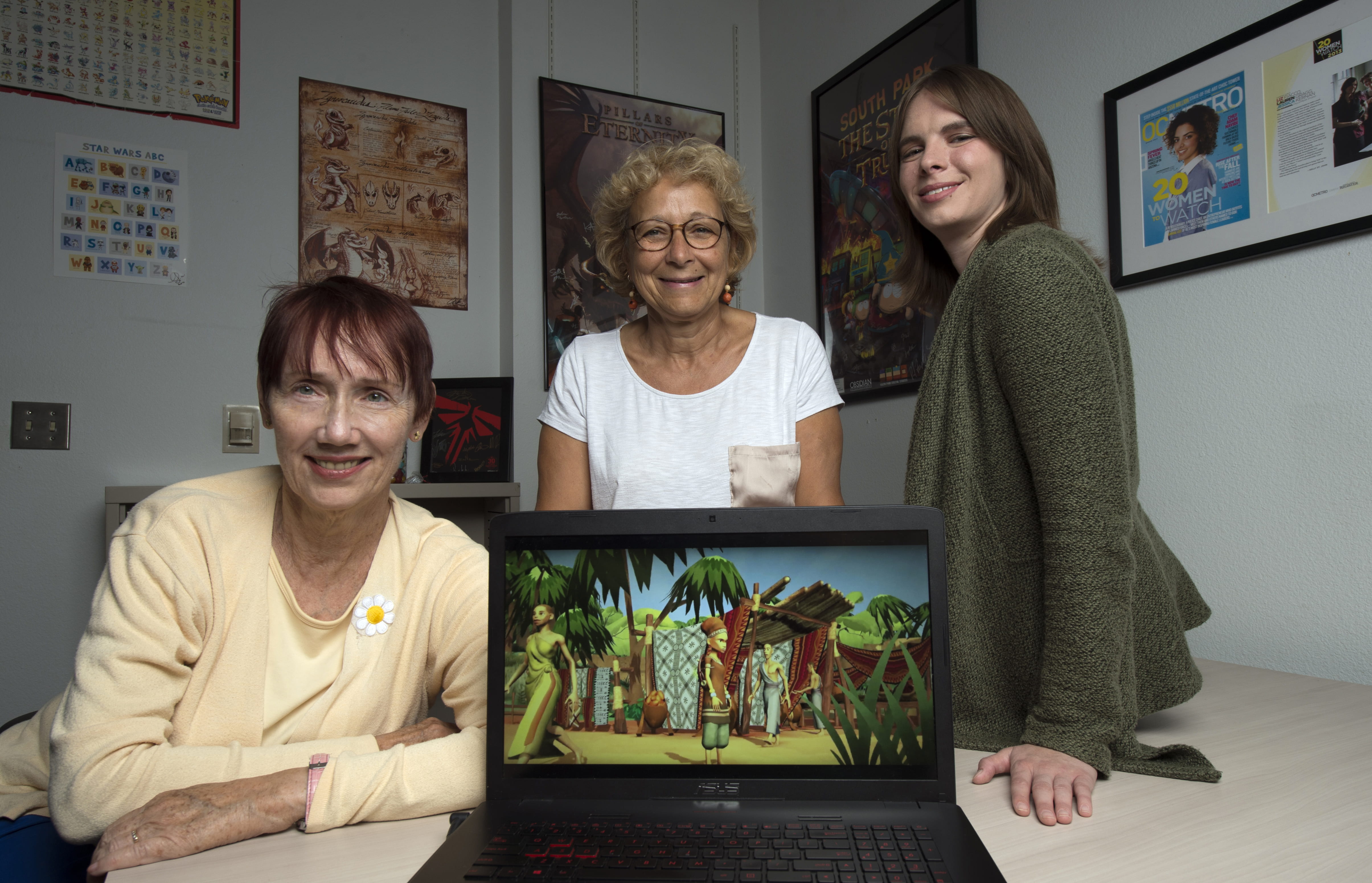Bringing history to life
Unlikely UCI trio designs educational computer game that immerses players in 19th-century Ghana

Despite almost a decade in the gaming industry, UCI computer science professor Magda El Zarki has never worked on anything quite like “Sankofa.” The recently completed computer game – created by El Zarki and a colleague, UCI history professor Patricia Seed – follows a young protagonist navigating an unconventional environment for the gaming world: 19th-century Ghana.
The immersive visual software is an attempt to “bring the cultural history of Ghana to life through gameplay,” Seed says, while “providing a learning experience that you couldn’t get in any other way.”
Seven years in the making, “Sankofa” is a cross-disciplinary venture into educational computer gaming. It has already garnered interest from the Smithsonian Institution and the California African American Museum, and Seed hopes it’ll be widely implemented in libraries and schools – where it could be accessed by its target audience, middle schoolers and teens.
“Sankofa” gets its name from a word in Twi meaning “go back and seek it,” which, according to Seed, is how players of the interactive, three-dimensional game learn the history of the Asante Kingdom, a West African society located in modern-day Ghana.
Gamers follow a young girl as she wanders through the local marketplace; creates a storytelling cloth; and explores Asante folk tales, spirits and legends. The ethnographically authentic landscape allows players to discover aspects of 19th-century Ghanian life that they might not encounter in a classroom.
“It’s a unique game,” says El Zarki, director of UCI’s Institute for Virtual Environments & Computer Games. “The learning goals are different from other games, because this is really about teaching an underrepresented culture.”
Orange County is an international gaming hub, home to about 50 independent gaming companies, including giants Blizzard and Obsidian. The pool of talented game designers here is large, and many are part of the UCI community – such as Jessica Kernan, an industry professional and a staff member at UCI’s Institute for Virtual Environments & Computer Games who was also instrumental in the creation of “Sankofa.”
“I’m proud of ‘Sankofa’ because it brings people in the present, in different countries even, nearer to those in different times and places and helps us imagine other lives like our own,” Kernan says. “I hope that ‘Sankofa’ can scratch the surface of that and bring historic Ghana one step closer to players around the world.”
Most challenging in the development of the game, Seed says, was researching minute details of the period – “the type of coinage that was in use; the clothing that was worn; the flora, fauna and fish that existed.”
“All of that has to be historical,” she says. “It involves an immense amount of accuracy in terms of even what the environment looked like – and then, on top of that, you have to tell a story.”
Seed, whose scholarship centers on Dutch colonial history, found common ground with El Zarki, who is of Dutch and Egyptian descent. Their research for “Sankofa” frequently took them to Ghana, where they studied primary-source engravings and interviewed local experts to ensure the game’s authenticity.
“Sankofa” isn’t the first collaboration of this sort between El Zarki and Seed. The pair also created “Elmina,” a three-dimensional tour of a 15th-century Ghanian slave fort. The idea for “Sankofa” was born from a desire to expand the interactivity of the “Elmina” experience, as well as to “communicate the history of who lived around the slave fort and broaden the perspective of the community rather than focusing on the oppression of the fort,” Seed says.
Overall, “Sankofa” aspires to “provide students a window into cultural history,” according to Kernan, and “inspire them to seek more information about Ghana and share that information to excite others as well.”
Seed concurs: “We’re trying to improve the memory of history by presenting it in an imaginative way that actively engages students. Through augmented reality, we can bring history to life.”